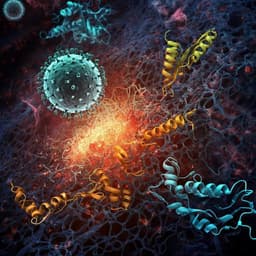
Veterinary Science
Vaccination of cattle with the *Babesia bovis* sexual-stage protein HAP2 abrogates parasite transmission by *Rhipicephalus microplus* ticks
M. G. Silva, R. G. Bastos, et al.
This groundbreaking study explores the potential of recombinant HAP2 as a transmission-blocking vaccine against *Babesia bovis*. Vaccinated calves showcased a remarkable immune response, preventing engorged ticks from transmitting the parasite, unlike their unvaccinated counterparts. Conducted by esteemed researchers Marta G. Silva, Reginaldo G. Bastos, Jacob M. Laughery, Heba F. Alzan, Vignesh A. Rathinasamy, Brian M. Cooke, and Carlos E. Suarez, this work highlights a promising approach to combatting this significant concern in veterinary medicine.
Playback language: English
Related Publications
Explore these studies to deepen your understanding of the subject.







